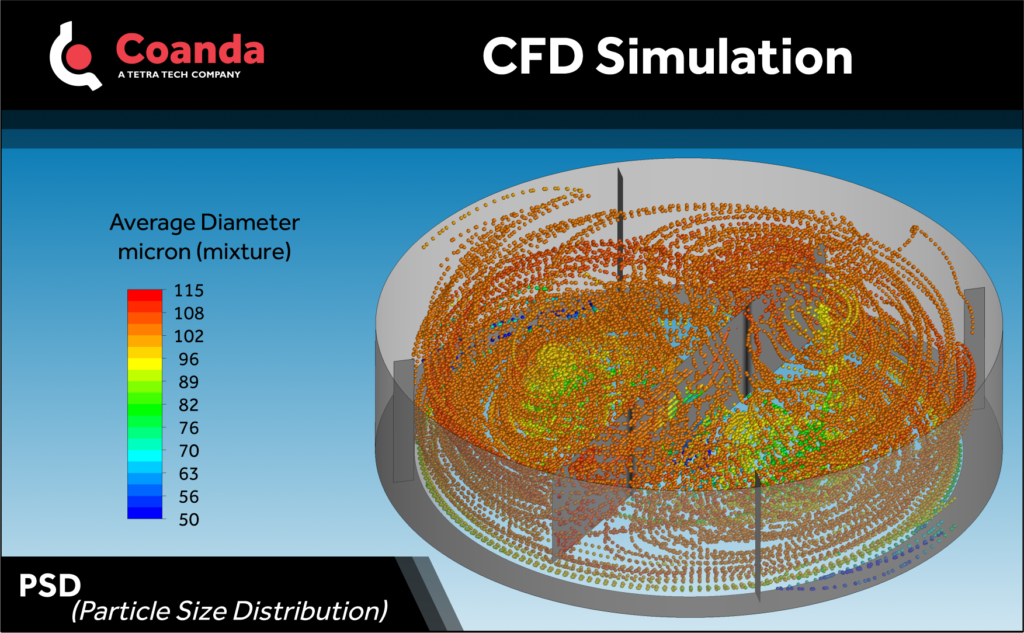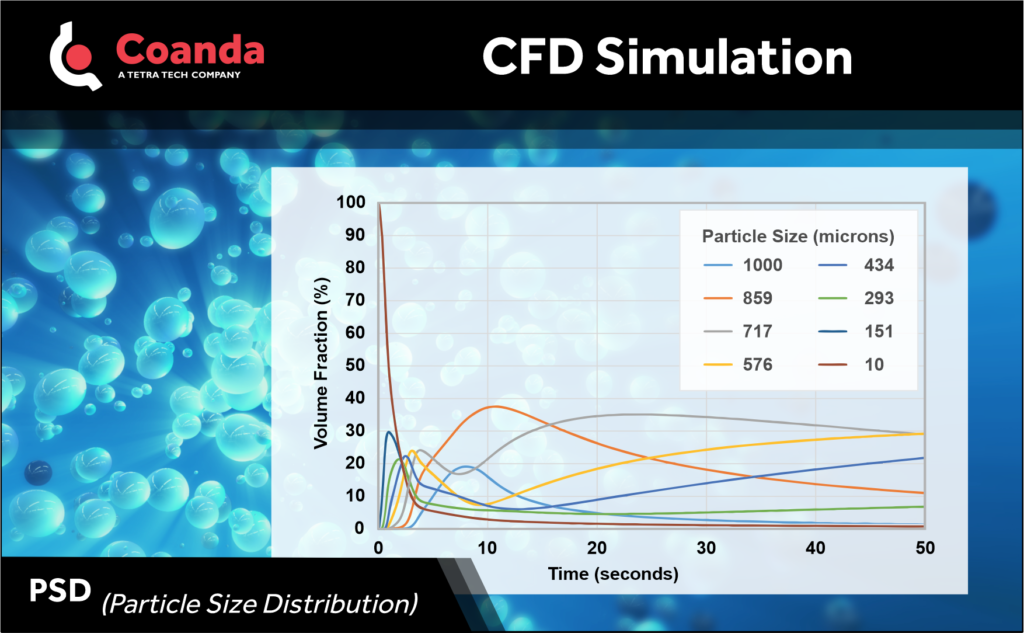CFD – Particle Size Distribution
Posted on March 3, 2022 Computational Fluid Dynamics
Often multiphase systems that we model in CFD contain dispersed phases. While the shape of the dispersed particles can be complex, it is common to simplify them to spheres. Sometimes, it is acceptable to assume that all particles have the same diameter resulting in a uniform distribution. Another approach is to assume that the particles can be represented locally by a single diameter that can change in space and time—this is a monodisperse distribution. Finally, we may need to represent the variety of sizes that can coexist within the same location creating a polydisperse distribution.

As an example of a CFD solution that includes a polydisperse distribution, this plot shows an evolution of floc sizes during slurry flocculation. The small particles fraction rapidly diminishes during the initial floc growth period, and the largest fraction of particles transitions across the sizes towards the largest bin. With time, the floc break-up becomes more pronounced resulting in the reversing of growth trends so that the largest fraction transitions back toward smaller bins but at a slower pace. The figure shows the distribution of the average floc diameter inside the mixer.



